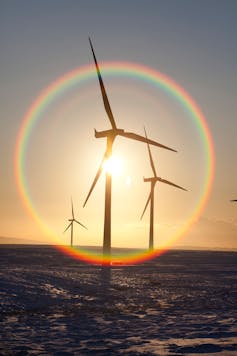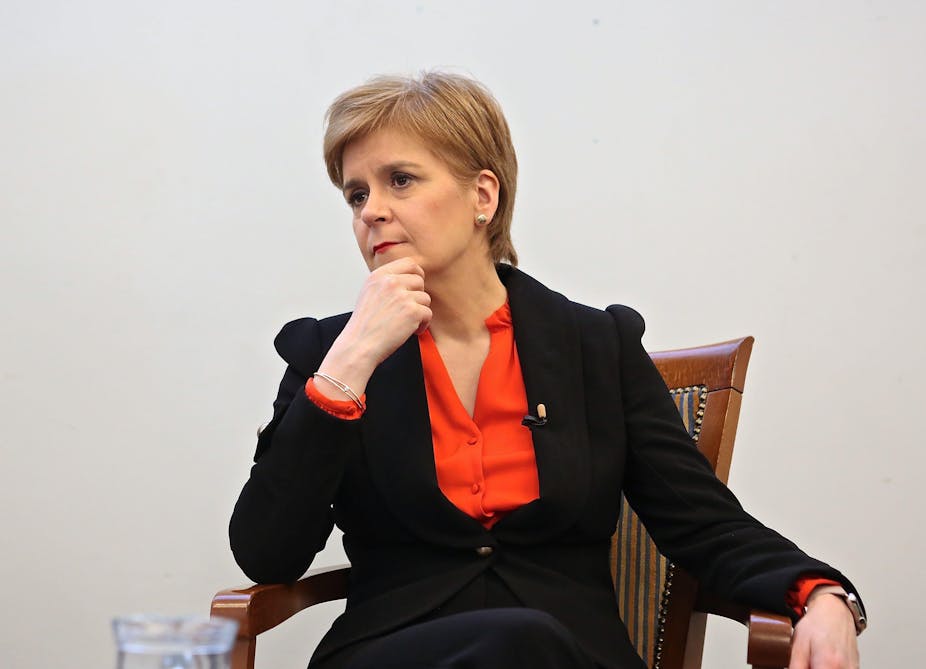Now that First Minister Nicola Sturgeon has survived the investigation over the handling of the case against Alex Salmond, Scotland’s attention is turning to the country’s May election. With the SNP seeking a clear mandate for a second referendum on the back of the vote, independence is back to the top of the agenda. It remains to be seen how Salmond’s new pro-independence Alba party will affect the outcome, but according to the latest independence polls, support for leaving the UK is still narrowly in front.
Yet there is much more economic and political uncertainty in Scotland than in 2014. Following Brexit, Scotland is having to choose which economic area it most wants to associate with – the UK or the EU.
Remaining in the UK means continuing Scotland’s existing economic relationship with England and Wales while facing a more complex relationship with the EU and more controversially Northern Ireland, which effectively remains in the single market.

What about voting for independence and joining the EU? One major problem is the EU fiscal rules, which require a general budget deficit of no more than 3% of GDP per member (this is temporarily suspended because of COVID).
In 2019-20, Scotland’s deficit amounted to 6.9% if North Sea oil revenues are included (or 7.5% without it). This was a considerable improvement on earlier years, but still well above the threshold – and that was before the pandemic.
Now UK borrowing is hitting record highs and the Institute for Fiscal Studies thinks Scotland’s effective deficit will have reached close to 30% in 2020-21. This will affect the long-term debt burden of both the UK and Scotland, and raises questions about how an independent Scotland’s share of the UK debt should be calculated.
Read more: Scottish independence referendum: why the economic issues are quite different to 2014
Any analysis of independence economics should therefore start by asking whether an independent Scotland could balance the books by increasing revenues and decreasing spending and how willing Scottish society would be to potentially make sacrifices. Trade looks likely to exacerbate this problem – in the short-term at least. Currently more than 60% of Scotland’s commerce is directed to other UK countries (including Northern Ireland, now practically an EU market for trading purposes) while only about 19% goes to the EU.
Ireland was actually similar before it joined the then European Economic Community (EEC) in 1973. Just before joining, almost 55% of her exports and 51% of imports were directed to the UK, while only 21% went to the EEC. These shares have since completely reversed, though it has taken time and was very complicated and costly for the country as such overhaul requires finding new markets and adjusting to the requirements of new customers, which is always costly for both workers and firms.
Scotland would have to go through a similar adjustment, and voters should be aware of this.
Scottish exports were at least competitive in the EU market pre-Brexit. In 2014, some economists suggested that dwindling North Sea oil revenues were a red herring and that Scotland could develop a competitive advantage in well-performing areas like food and drink, financial services, sustainable tourism and green energy.
The EU and green energy
One big question is how rejoining the EU would affect Scotland’s finances. The EU would not subsidise Scottish public sector spending, and would probably not make funds available through the bloc’s Cohesion Fund. Scots might not think their country is rich, but it earns more than 90% of the EU’s average gross national income – well above various needier members.
However, the European Regional Development Fund (ERDF) could be of assistance, potentially easing the transition for the nation’s public finances. The ERDF, the 2014-20 budget of which amounted to €199 billion (£170 billion), focuses on the areas which could well be priorities for an independent Scotland such as innovation and research, the digital agenda, support for small businesses and the low-carbon economy.
Green energy would be of particular mutual interest to Scotland and the EU, especially wind power, for which Scotland has the most favourable conditions in Europe. Scotland’s accession would be valuable to help the EU meet its goal of climate neutrality by 2050.

At least 25% of the EU’s long-term budget is to be dedicated to climate action, while the European Investment Bank, the EU’s lending arm, plans to invest €1 trillion in climate action and environmental sustainability between now and 2030.
Scotland’s wind power capacity is comparable with Italy and below only Germany, Spain and France. But more importantly, 97% of internal energy consumption in Scotland originates from renewables. The EU member with the highest green energy consumption is Sweden, with less than 60%. The EU total is only around 20%, so Scotland would immediately raise this share.
Any increase in Scotland’s wind energy production could also be diverted to supply the EU with green energy, further increasing its overall share. Yes there are limitations with the electrical interconnectors, but EU finance could be used to expand them.
As Glasgow gets ready to host the COP26 climate conference in November, Scotland’s competitive advantage in green energy ought to be an important part of the economic case for independence if and when the second referendum takes place.

